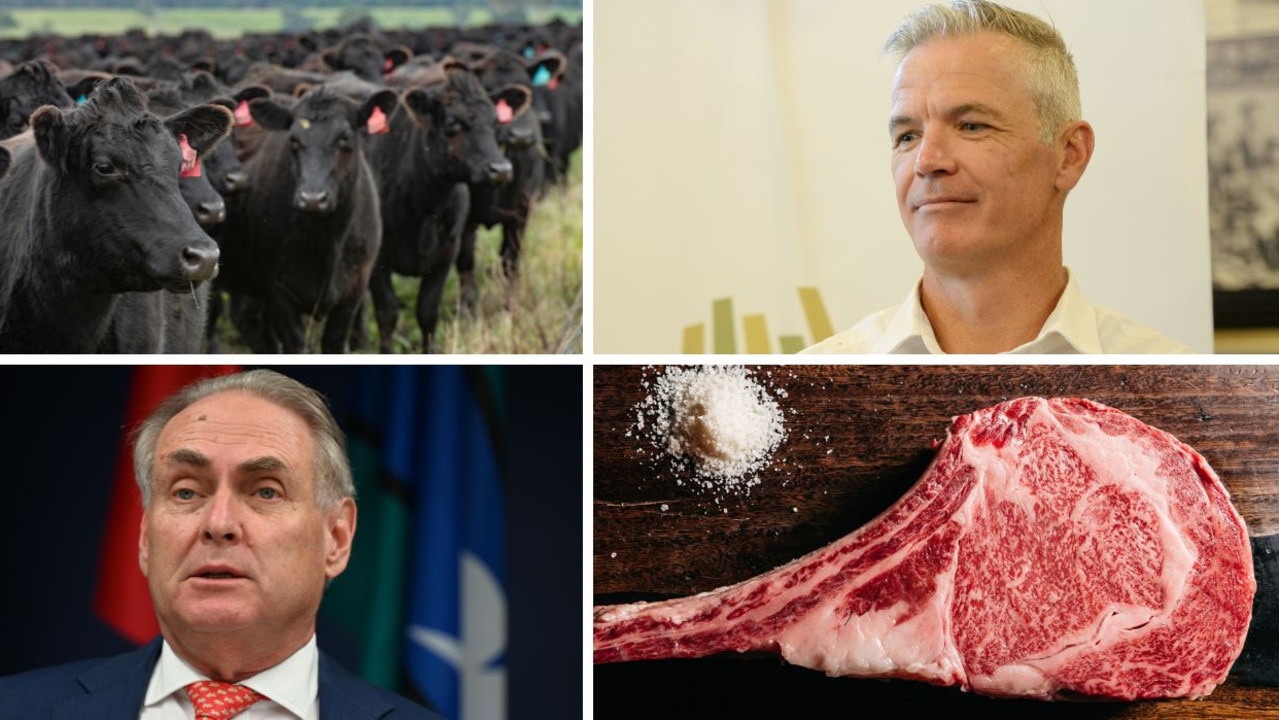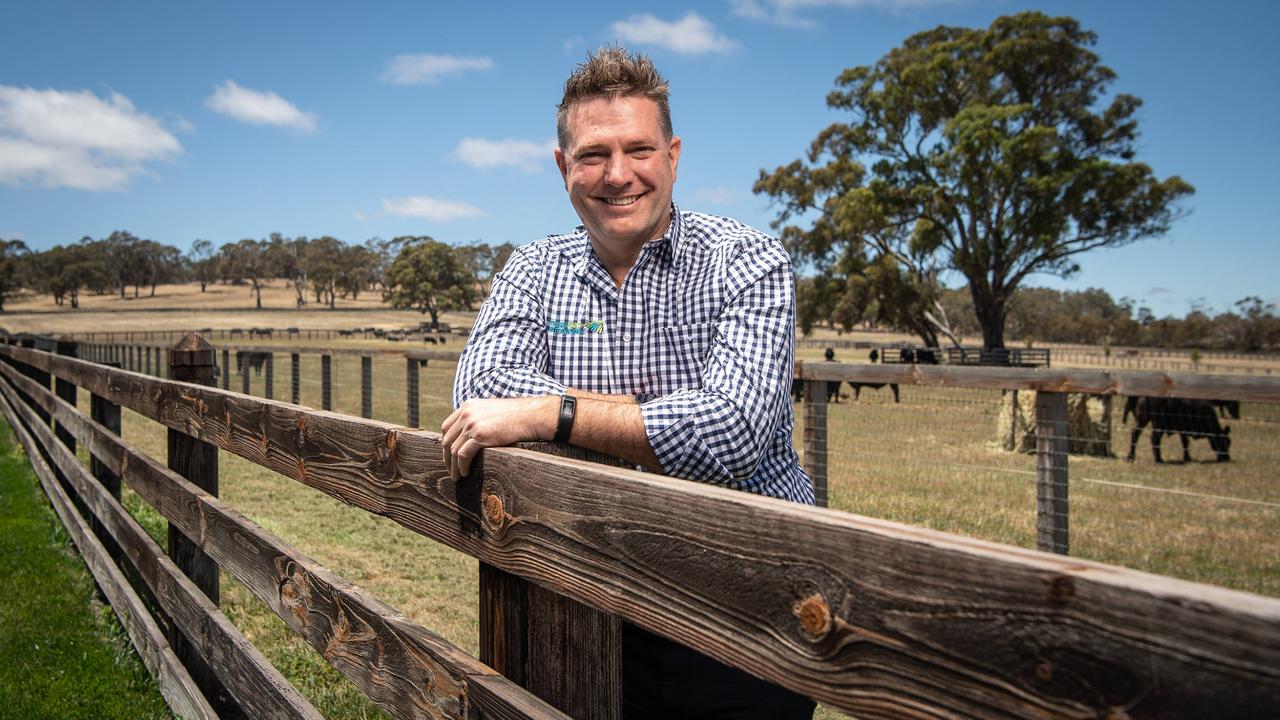Burnbrae Poll Merino Stud: Golden Plains producers Alan and Steven Wishart embrace data
The Wisharts are the most recent in a line of producers that stretches back generations, but have embraced new approaches to increase quality.
Agribusiness
Don't miss out on the headlines from Agribusiness. Followed categories will be added to My News.
Balance is the name of the game for the team behind Inverleigh’s Burnbrae Poll Merino Stud.
Alan Wishart and his son, Steven, are fifth- and sixth-generation producers in Victoria’s Golden Plains region.
This father-son duo work together to achieve an easy-care, adaptable sheep suitable for medium to high rainfall zones, with good fleece weight and durability during the cold Victorian winters.
Burnbrae Poll Merino Stud was established in 1995, but the Wishart family has farmed the land near Inverleigh since the 1860s.
The original bluestone cottage – recently renovated by Steven and his wife – sits proud over a creek that runs through the property, connecting them directly to the land they work.
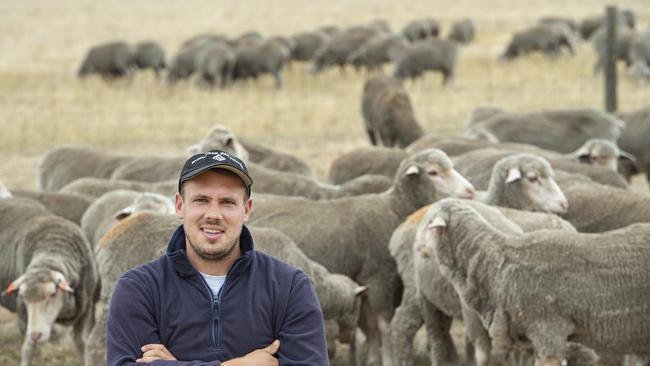
It’s this sense of place – and an awareness of the environment around them – that drives the Wisharts’ desire to produce a sheep that is highly adaptable to the weather, resilient to the cold, with a concentration on early growth rates, fleece weight and reproductive traits, while still maintaining fibre diameter and staple strength, along with low worm egg counts.
It’s a balancing act, according to Steven, but his passion for data, genetics and tailoring traits specifically for his stud keeps him focused on breeding the perfect stock for his operation.
The stud encompasses three properties, totalling 1200ha, including a 130ha cropping block at Cressy.
About 3000 ewes were joined this year, including 400 stud ewes, 150 stud ewe lambs, 1400 commercial and 1000 Merino to terminal White Suffolk sires. The ewes along with 1200 wethers are run between Inverleigh and Shelford.
Steve said ewes were joined naturally in the first week of January, before AI was used the following week.
“All ewes are joined for 35 days with studs and ewe lambs receiving teasers prior to joining,” Steve said. “They’ll go into containment not long after joining … any pastures that need to be knocked down a bit will happen in that period, and they’ll be in containment until May, season dependent.”
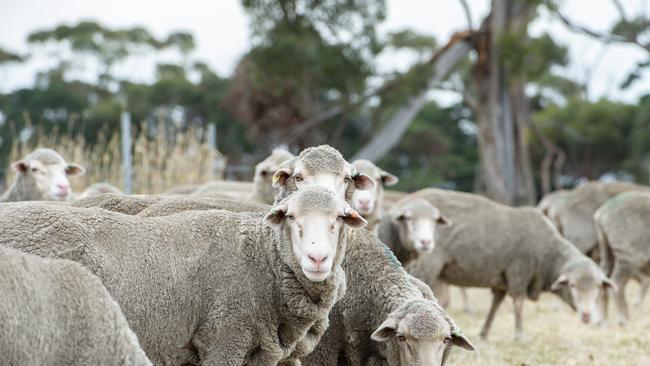
The containment time is “so valuable” to ensuring the Wisharts keep building on their feed wedge when the autumn break comes along.
“It’s really important to lamb down on 1200kg to 1500kg per hectare of feed on offer,” Steven said. The cereal crops are an important avenue for the stud, providing feed and protein for lambs and ewes in winter when pasture growth has slowed right down.
This season, the Wisharts sowed Trojan and Beaufort wheat, Ignite and Wahoo Canola
Rana and Amberley beans have been planted as well, which works as a protein boost for ewe lambs to help grow them to an ideal 42-45kg weight prior to joining in late February.
Annual ryegrass is also sown, which provides a feed wedge in June, along with a silage option in the spring.
WELFARE ON TOP
Traits conducive to animal welfare are at the forefront of the Wisharts enterprise, according to Steven, with a focus on fat and eye muscle, worm resistance, low breech wrinkle, low dag and breech cover, along with reproductive and structural traits.
Genetic fat and muscle is important too when breeding a resilient and efficient sheep.
“The selection of these traits have been the cornerstone of our business for nearly the past decade which has enabled us to move from a 80 to 90 per cent marking rate to 138 per cent in the stud in 2021,” Steven said.
“The target for 2022 is 150 per cent, which based on our previous years’ results, is certainly within reach.”
Alan said the focus on animal welfare ultimately paid off economically as well.
“A lot of fat, and muscle mass, helps with the animal welfare … they stay in better condition for longer, and when conditions are good like now, they’ll lay down more fat too, and it’ll last longer,” Alan says.
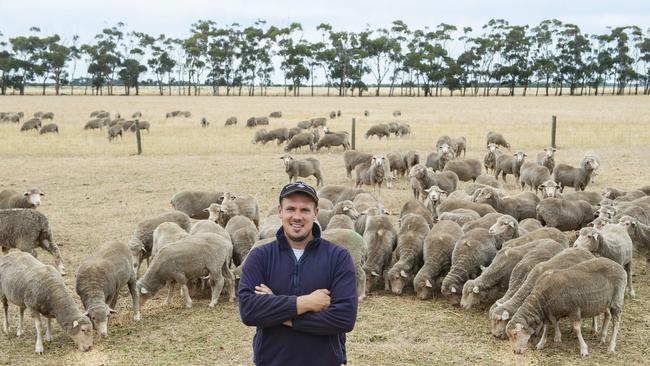
“Which means during the autumn we don’t need to feed as much to keep them in +3 Condition Score”
Burnbrae stock bred for resilience and early maturation give the Wisharts multiple options when selling.
“That’s what we’re starting to see,” Steven said.
“Once you start weaning and marking well above that 100 per cent rate, you put a lot of selection pressure on your flock. We can now push out ewes that we were letting go to about six years old, or ewes that are underperforming, and we can sell them as surplus ewes to people who are rebuilding,” Steven said.
“It just gives us so many options when you are weaning at those rates. For our stud, especially as we’re joining ram lambs and ewe lambs, that genetic impact is really short. It’s important we use genomics in there as well, to understand exactly what impact those rams will have in the next generation and in five years’ time.
“We are really starting to see a substantial step-change in what a Merino is capable of doing.
The upside is massive, especially when a ewe can wean her weight in lambs at 12 weeks of age and throw in 10 per cent (6kg) of her standard reference weight in an 18-micron fleece on an annual basis is a pretty profitable combination.”
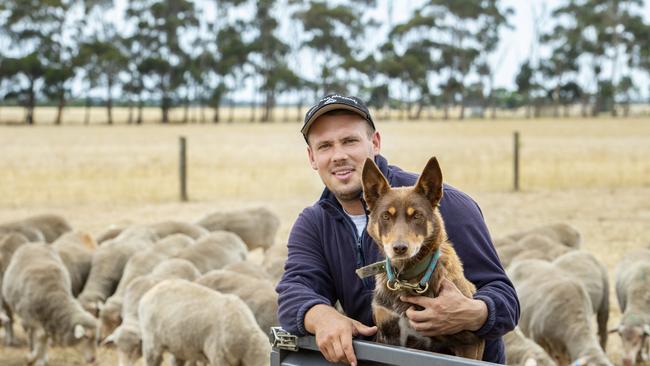
Getting the genetics correct for his enterprise is important to Steven, and is “one of the key drivers” for placing welfare traits high on the list, to remove all hurdles for lambs as they grow and develop.
“So they don’t have that worm burden, they’re not getting dags or fly struck, and are as efficient going into autumn,” Steven said.
“They’ve got that fat, which also comes back to maturity. We now understand it is both fat and muscle linked to early maturing genetics. And that’s really important to ewes when they are joining at six to seven months of age, but also to be able to get back into lamb again.”
SHEAR BLISS
It’s almost shearing time at Burnbrae Poll Merino, an event which usually takes about three weeks to complete.
The Burnbrae flock averages about 18.5 micron, with rams shorn last year averaging a fine 17.5 micron.
“That’s pretty optimal,” Steven said. “Once you start going too fine, you’re affecting your lamb survival. About 18 to 19 micron is optimal.”
Planting up to 1000 trees a year to connect up riparian vegetation, as well as create windbreaks for sheep and lambs, is another measure designed to protect the flock.
The concentrated efforts of the Wisharts on the quality of their sheep and the wool they produce has paid off, in the form of Responsible Wool Standard accreditation.
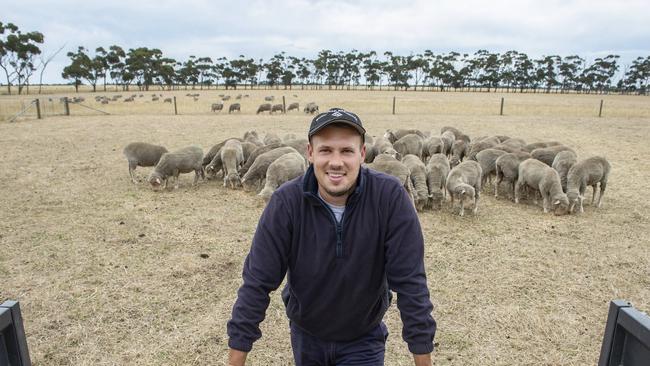
While the paperwork is still in the pipelines, the voluntary standard, which addresses the welfare of sheep and the land they graze, will enable the family to sell their wool clip at a premium rate, while also solidifying the investment in animal welfare traits throughout the flock.
Steven said demand for non-mulesed wool had been growing as more fashion companies prioritised wool from non-mulesed sheep.
“The premium is certainly important, but it’s also important for the welfare traits,” Steven said.
“And that point of difference is what we’re chasing, and those welfare traits … it all ties into producing the most productive animal, as efficiently as possible.”
Continuing to work on achieving this efficient, productive animal is the key focus for the Wishart family in coming years, with constant tweaking, data collecting and breeding for the optimal Burnbrae stud animal.
“We don’t know yet the optimal fat and muscle ratios,” Alan said.
Steven added: “I’ve got traits and targets, but we don’t really know what good looks like yet.”
Originally published as Burnbrae Poll Merino Stud: Golden Plains producers Alan and Steven Wishart embrace data




